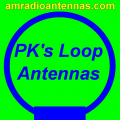G8JNJ
About
- Username
- G8JNJ
- Joined
- Visits
- 4,662
- Last Active
- Roles
- Member
- Points
- 130
Reactions
-
HF data using 3 (maybe more) freq
Should have said, these are the bursts centered on 4785KHz
See
http://www.hfindustry.com/meetings_presentations/presentation_materials/2017_sep_hfia/presentations/THALES_HFXL_HFIAsept2017_Presentation_final2_Bernier.pdf
Regards,
Martin - G8JNJ -
HF data using 3 (maybe more) freq
Hi Dave,
I've just managed to perform four runs using different KiWi's (fortunately Emerald was available.
I used the widest I/Q filter bandwidth to straddle two sets of databursts that had no other transmissions at low level in the background.
The best (narrow red band) 'pairs' of plots from all four runs intersect St Eval and the composite best guess location is just off the West Cornish coast in the Irish sea.
Regards,
Martin - G8JNJ -
HF data using 3 (maybe more) freq
Hi Dave,
See
http://forum.kiwisdr.com/discussion/comment/2631#Comment_2631
NVIS makes a real mess of TDoA on the LF bands.
You may have to try TDoA at a few different times if day, before you find stable propagation.
Regards,
Martin -
S-meter extension
Hi John,
This week I've been trying to use a number of KiWis to perform some antenna field strength measurements, but its been a somewhat frustrating process.
So I'd also like to echo Jim's request for an option to allow the the S-meter logging period to be even slower, perhaps up to 24hrs, so that I could also use it to monitor changes in my noise floor, signal levels from BC stations and other propagation related monitoring.
It's currently a real pain to have to derive this information from the graph image and the subsequent visual resolution is only about 3dB or so, it's also difficult to check for max values over a period of time or try to determine the signal average level. I know there is already a request to provide this functionality, but I also know that there are more pressing or higher priority fixes to be implemented first.
I wondered if it would be possible to add a function to store and be able to download the graphed dBm values as a CSV file. Each value to be timestamped and the header to the contain frequency and RX bandwidth.
This would permit much more detailed off-line analysis of max /min values, averages and other trends, which wouldn't need to be added to the existing graphing option. Maybe sampling intervals could be defined or automatically selected as a function of logging period so that huge files are not generated. Each time the S-meter restarts the file could be overwritten, perhaps a bit like the fax image files ?
Regards,
Martin - G8JNJ -
Interesting signal 16115 MHz
Hi Dave,
There has been speculation on the UDXF@groups.io forum that it's associated with test transmissions from the Frankfurt area associated with High Frequency Financial Trading. It's also been heard just below 15MHz and moves around a bit.
If you are interested in'strange, signals it's worth joining UDXF just to get access to their logs of signals heard.
Regards,
Martin - G8JNJ -
Quick comparison between the PA0RDT Mini-Whip and The RA0SMS Mini-Whip
@Lonecrow
"That diagram there - the chokes are "as needed" right? Or do you need 2 for sure? Those brown lines above the "ground" symbol. What are they? Thinking of how I could ground coax without making another cut."
Yes the 'chokes are as needed' you will reach a point where adding more makes little or no difference.
The brown lines were meant to indicate the noise level being carried on the outer of the coax screen gradually diminishing as it gets closer to the actual antenna.
The three stepped horizontal bar symbols are ground connections and meant to indicate the addition of earth rod's, which like the chokes are "as needed".
You can ground coax by carefully stripping back the outer insulation and tightly wrapping some wire around the screen (if it is copper and you can very quickly solder with a hot iron even better) then tightly wrap the connection with some self amalgamating tape and cover with normal PVC insulation tape for a water and UV resistant joint.
I hope that now makes a bit more sense.
Regards,
Martin - G8JNJ -
V 1.214 WSPR-autorun on 8 channels not so effective as on 4 channels [known limitation]
After all that I forgot to raise the point that I originally intended.
I think the built in WSPR decoder is adequate for casual users. It's a bit like the FSK and Fax decoders. They are perfectly OK for a quick 'look see' but serious users would probably use an external decoder fed via a sound-card loop-back or VAC.
At lest there is a good technical workaround for WSPR and 'serious' users now have the option of being able to use up to 8 RX channels too, which I think is a very good solution.
Regards,
Martin - G8JNJ -
V 1.214 WSPR-autorun on 8 channels not so effective as on 4 channels [known limitation]
Hi All,
I think that maybe we are all loosing sight of what the KiWi was originally designed to do and what it is now capable of.
A while ago John posted a link https://en.wikipedia.org/wiki/No_good_deed_goes_unpunished
Which I think nicely sums up the situation today. John has managed to achieve a fantastic amount of functionality in the KiWi, but unfortunately human nature being what it is, this just leads to us all (well me certainly) tending to want even more, no matter how technically difficult and no matter how much Scotty would have protested that Ye cannae change the laws of physics.
I suspect that we have now well gone past the point of 'diminishing returns' https://en.wikipedia.org/wiki/Diminishing_returns so perhaps we need to be more realistic about what is desirable, possible, or what is likely to cause John to "spontaneously combust" https://en.wikipedia.org/wiki/Spontaneous_human_combustion if we carry on urging him to try and do even more with less.
My apologies to John, for all my reduculous requests and crazy suggestions, and I hope that's enough metaphor's in one posting for folks to consider :-)
Regards,
Martin - G8JNJ -
Recent problem with band pass in saved frequencies
Hi Dave,
I think part of the problem is that the KiWi tunes to the center of the signal when you click on the waterfall rather than to the carrier frequency in the case of USB or LSB. Hence the bandwidth is relative to that center frequency.
There have been lots of discussions in the past about the waterfall tuning point, with arguments for and against tuning to the 'missing' carrier frequency in the case of SSB. I think most amateurs are used to tuning to the carrier, but Johns argument was that most KiWi users would instinctively click on the midde of a signal they see on the waterfall rather than to one edge or the other depending upon if it's USB, LSB or something else.
Personally I like tuning to the carrier, as you can easily swap between USB, LSB and AM, but I understand John's point, and it's his baby :-)
I don't think that defining the upper and lower pass-band points is a bad feature, most amateur transceivers and SDR's (usually by dragging the filter 'edges' on the waterfall) work in that way, although they may also have narrow, normal and wide presets for quick changes.
I think it's just a quirk of the KiWi, just like any other transceiver or software application.
Regards,
Martin - G8JNJ -
V1.212 8ch mode - G8JNJ still not displaying on TDoA Map despite no users and good GPS [fixed]
Hi John,
Ah my fault. I hadn't realised that selecting one of the coloured tabs on the config page actually selected the method, I thought they were just tabs to access the config entry boxes. I'd accidentally left the reverse proxy tab set the last time viewed the separate options and then exited the page.
Now I've been made aware of it I properly understand the notes above the tabs.
Thanks for the quick fix, and apologies for the confusion.
Regards,
Martin - G8JNJ





